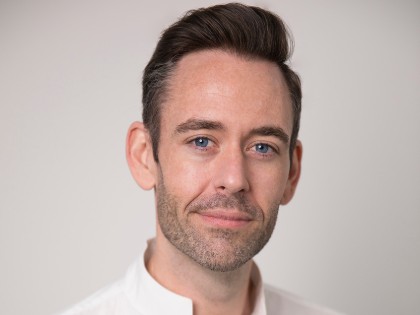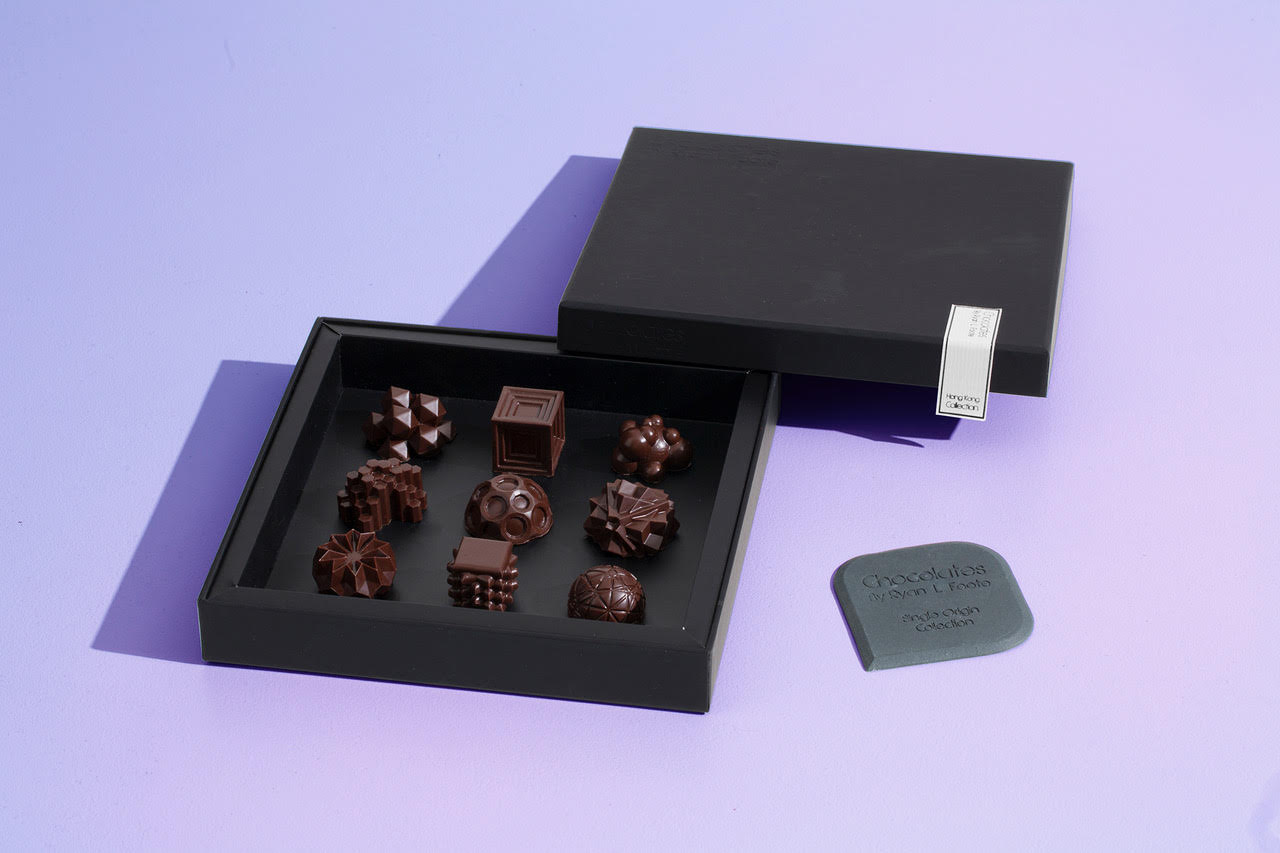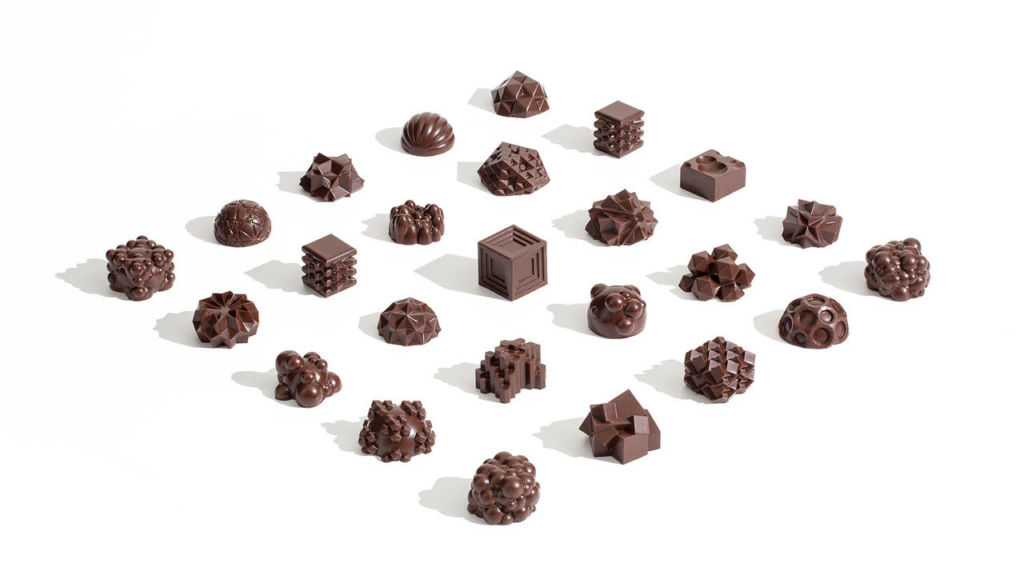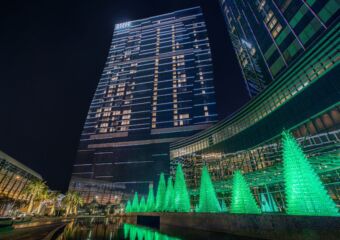It’s the season of love and what’s more cliche than getting a box of chocolates and a lovely bouquet of roses from your sweetheart? Chocolates and Valentine’s Day go hand in hand and it has been like this for centuries even! Cadbury started putting Cupids and rosebuds on heart shaped boxes, way back in 1861 and people would save mementos like love letters in these beautiful boxes. We caught up with Ryan L Foote, chocolatier and artist, to find out more about chocolates.

Can you tell us a bit about yourself and what you do?
At university I studied Sculpture and Spatial Practice but my creative practice kept evolving from large installation artworks, set design, event management, food design, ceramics, graphic design, and gastronomy. Right now my main focuses are my chocolate company based in Hong Kong and a ceramic design studio based in Melbourne. They seem unconnected but both evolved from Food Art popup projects that I was doing all over the world. I started from creating the whole space—concept, tables, chairs, styling of wait staff—to later getting more involved in creating my own food concepts too and creating all recipes and even porcelain tableware.
I am now based between Hong Kong and Melbourne sharing my time between these two businesses, and squeezing in the odd art commission too.

What is Chocolates by Ryan L Foote?
Chocolates by Ryan L Foote is a chocolate brand I launched in Hong Kong at the end of 2018. It is something I have been developing for the past three and a half years with the aim to create contemporary chocolates for the digital age.
I use 3D printing technologies and traditional chocolatier techniques then blend them together in my range and create gourmet chocolate with cool digital shapes.
The flavours are inspired by local foods and ingredients. Right now it’s Hong Kong and Australia—my two main locations. I wanted to highlight each location’s unique dishes, local ingredients and create interesting, bold flavours. There is also a range of Single Origin chocolates, which is suitable for vegans, with chocolate grown in Asia Pacific region, countries like Taiwan, Philippines, Solomon Islands, and more.
The chocolate collections are complemented by a range of porcelain pieces I designed for the complete chocolate tasting experience. Involving 3D generated cups, shaped like one of the chocolates, and crystalline glazed plates reflecting complex chocolate tempering processes.
What’s your favourite part about making chocolate? And what has been the hardest part?
The hardest part of running a chocolate business is just like any start up. I juggle all the different roles you need to do from marketing, budgets to sales and not having the time you wished you had in the kitchen. As far as my favorite thing, it would be the creative part of developing the concepts, flavours and testing them in the kitchen. I love creating recipes, testing and refining them to find just the perfect texture, mixing different flavours
Did you always want to be a chocolate maker?
No, but I have always been interested in pushing boundaries and mixing old and new technologies. I also love experimenting and applying techniques from one field to another. For example, a lot of times my ceramic making techniques are applied in chocolate-making, and the other way around too.

Why is chocolate associated with Valentine’s Day?
I don’t know where the tradition comes from, but my guess would be because chocolate really is a beautiful ingredient. It is sweet and delicious, and those are the best two things you could give someone you love.
What are 12 things people don’t know about how chocolate is made?
1. We think of chocolate as a delicious brown product wrapped in foil or in a perfectly arranged box, but chocolate begins its life as a fruit which comes in bright oranges, yellow, red and purple tones.
2. Like coffee, we don’t use the fruity fleshy part of the fruit but the beans, which are scooped out of the white pulpy part of the pod. Once the fruit is harvested the process of making chocolates begins immediately as the the sweet flesh of the fruit starts to go bad very fast once picked.
3. Chocolate is a fermented product. Yes, like kombucha and kimchi! And it is also the most important stage in developing the flavour of the chocolate.
4. Different countries have different methods, but there are two basic methods: using heaps and “sweating” boxes. The most common is that the pods and pulp are placed into large wooden containers with holes in the bottom allowing for drainage and air flow. Then, the pulp is allowed to ferment for five to seven days. During the process, the beans are turned to help them ferment more evenly. This often has the biggest impact on the quality and flavour of the finished chocolate and often done by the farmer.
5. Just like tea and coffee, cocoa beans are also dried—mostly sundried. This is another crucial step in the enhancement of the flavor of cacao. After the lengthy fermentation process, this is usually done by spreading them out into a single layer under the sun.
7. Around the equator is where most of the world’s chocolate is produced. Tropical regions where the climate is hot and humid is well suited for growing cocoa trees. 70% of the world’s cocoa beans come from four West African countries, but countries like Vietnam, Philippines, Fiji, Solomon islands, Taiwan are also growing cocoa on this side of the world.
8. Roasting is mainly done by the chocolate maker rather than the farmer but there are a few chocolate companies who make their chocolate where it grows. However the hot climate required to grow cocoa makes the chocolate making process more challenging. Most chocolate is made in cooler climates to get the right temper, but since the invention of air conditioning it can be made anywhere! The methods of roasting vary a lot from one chocolate maker to another. The exact temperature and roast time are part of the chocolate maker’s (often secret) recipe, and will have been worked out with careful experimentation and lots of tasting!
9. Industrialised chocolate normally has flavoring added to it! The bar of chocolate you find at your local supermarket aims at being consistent which is a challenge in itself. So to do this, they often add vanilla flavoring and lots of sugar!
10. Every wondered why a supermarket chocolate bar can be so cheap and an artisanal bar of chocolate cost so much? One of the things industrial chocolate makers do to make their chocolate last longer is that they remove the cocoa butter out of the chocolate. Then, it’s replaced with a vegetable fat which means it does not go out of temper, melt on hot days or change in appearance. However, this does not release the rich range of flavours in the same way as cocoa butter, which melts at around 34 degrees, just a few degrees below the human body’s (36.6) meaning it’s ideal for melting and releasing flavours on the tongue.
11. Tempering chocolate involves growing crystals! Great chocolate should have a shiny finish and a good “snap”—that clean clicking sound when you break a piece off. This is created by the process of tempering the cocoa butter within the chocolate which is done by raising, lowering and raising the temperature of the chocolate to form exactly the right kind of crystal structures within the chocolate. If you were to let the untempered chocolate cool naturally, the chocolate would be soft, chalky and crumbly and would not melt evenly on the tongue.
To purchase his chocolates and porcelain pieces, go to www.ChocolatesByRyanLFoote.com
Follow Ryan on his Instagram account here @ChocolatesByRLF


































